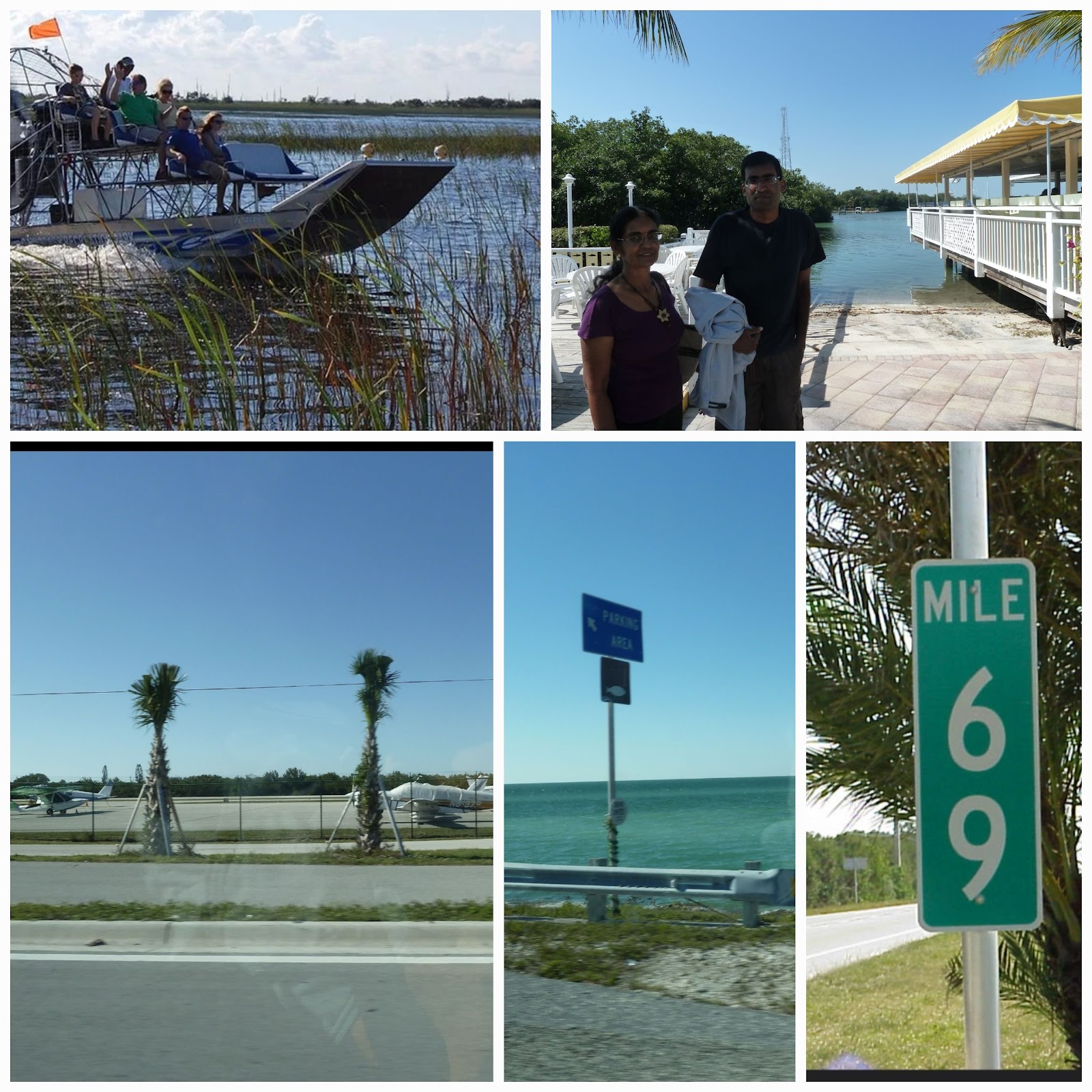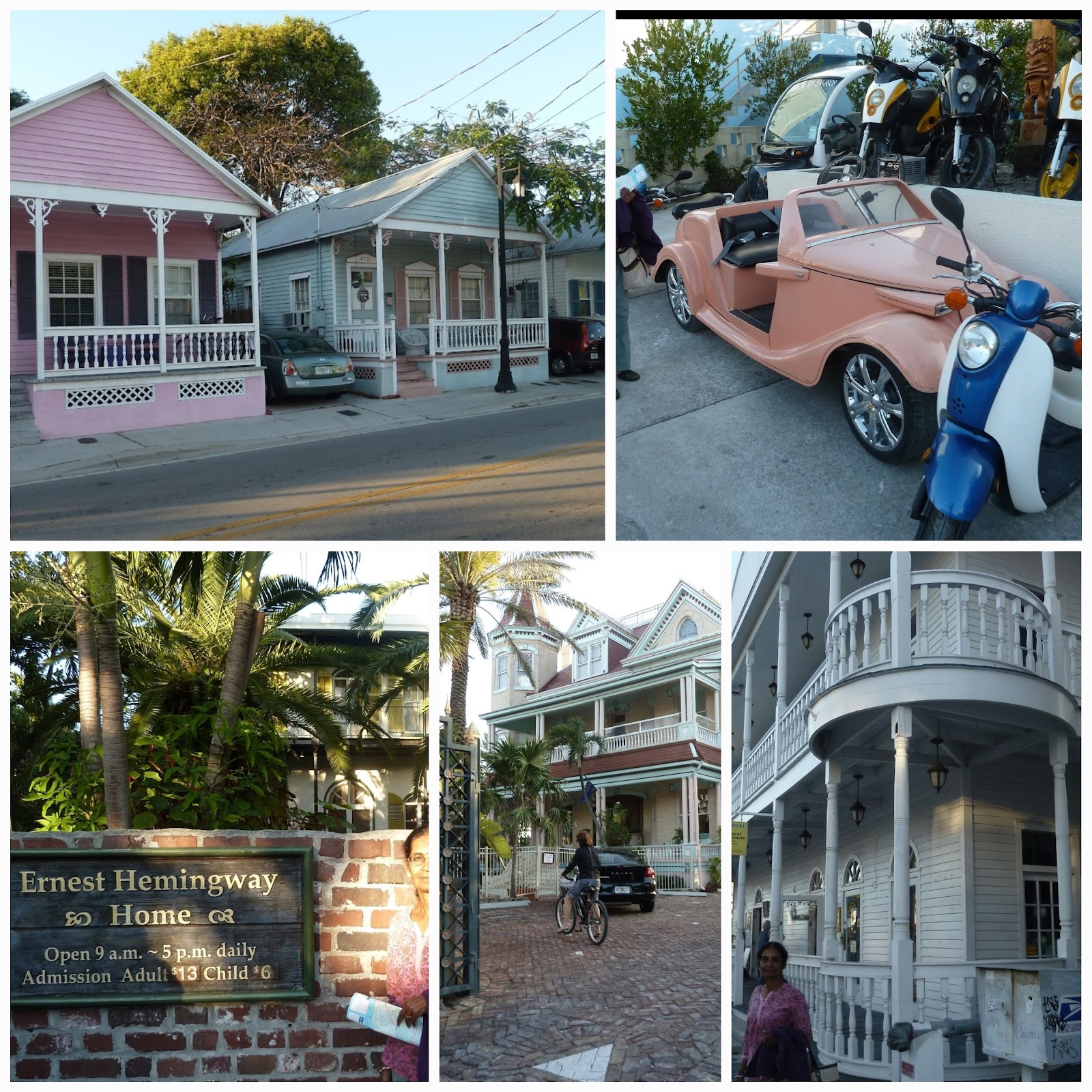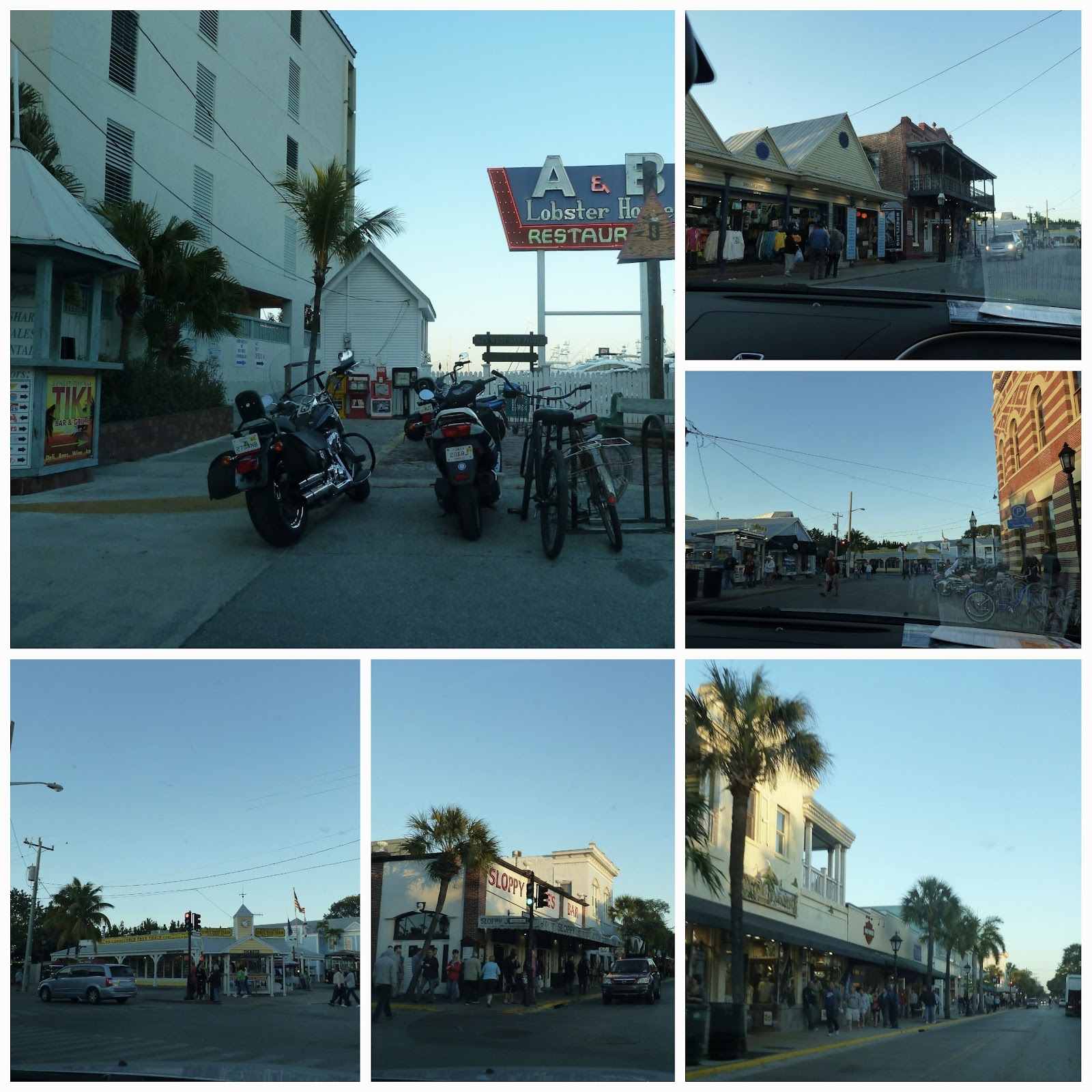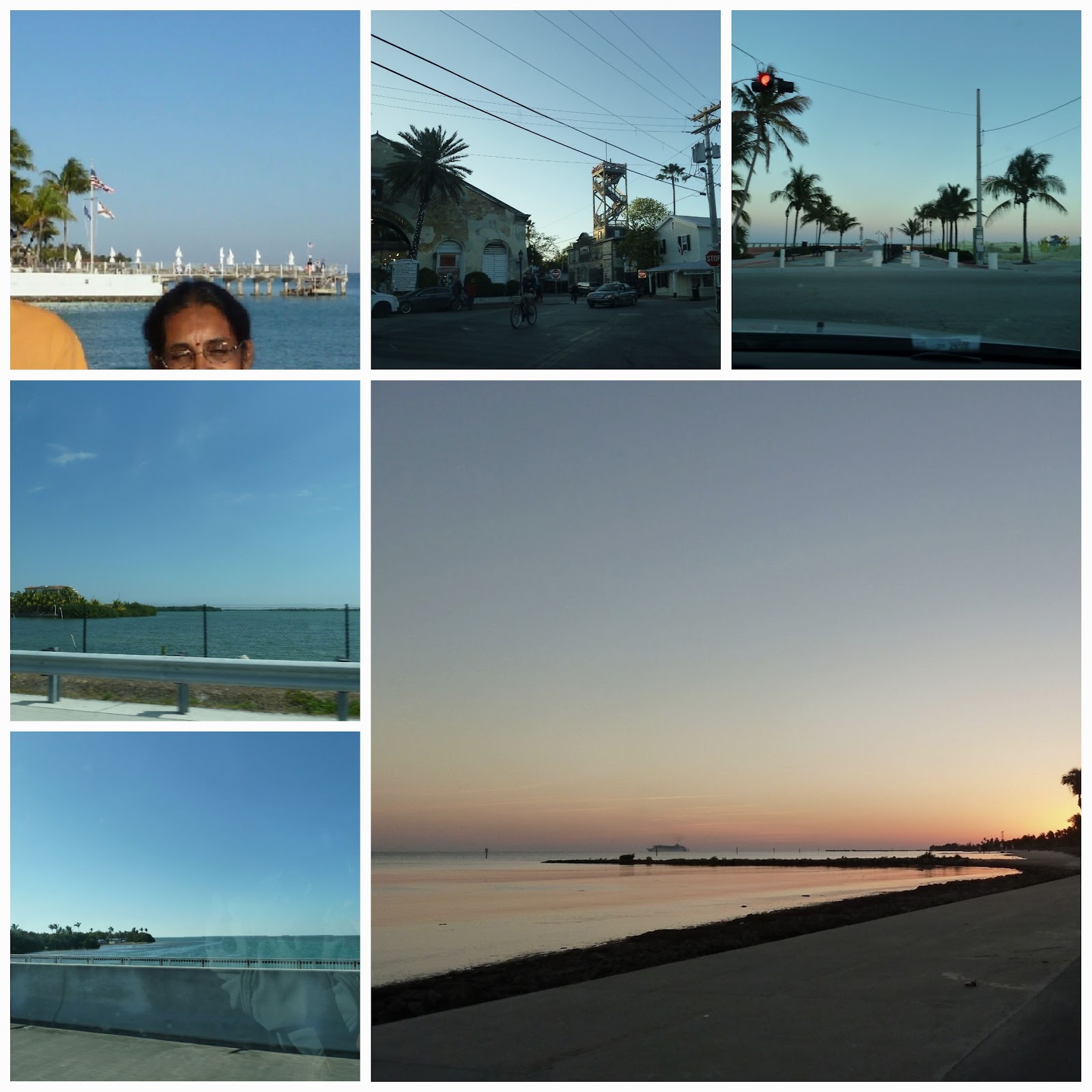Trust our luck: when GPS fails
We drive from Fort Lauderdale, Florida, to Key West through the everglades, the largest tropical wilderness in the US, the waterways of which whir with activity. Airboats glide through groves of mangrove for eager safari goers to spot alligators, turtles and such in their natural habitat. We are supposed to turn left at a particular point towards Key West. We did but the road took us nowhere. Perhaps the GPS in our rented car needed time to reorient in this wilderness. We tried again. Still no luck. So we decided to continue further and explore the next turn. It worked. A good sense of direction and distance estimates are highly valuable in moments like this.
We have arrived in Key Largo
The Spanish version translates to long (Largo) little island (key). It is 48 km long and 3.2 km wide. This is the biggest of the 1700 islands that make up the Florida Keys. When we came here a few years before, driving all the way from Fort Lauderdale, a storm was impending. It was very close to sunset as we arrived at the information centre. We were warned to stay put since driving any further would be hazardous. We were not prepared to be tossed and turned and blinded by any natural hazard and so decided to stay the night on this island. The centre is able to arrange for our stay in a nearby hotel. The storm is predicted to be a few hours away.
Testing the waters
Since we have a little time, and there is still some daylight, we decide to drive towards Key West for about an hour and then return to safety. This drive brings home the fact that we are taking a huge risk. The bridge that connects to the next island seems to part the sea. Before we know it we have crossed the island on to another bridge and another island. These islands are so small they are barely visible from the bridge. The raised walls of the bridges and the median are painted a light blue and so until our eyes are acquainted with them we seem to be literally on a narrow isthmus , the seas frighteningly close on either side. Most of the roads are single lane and are not lit at night. A hair raising experience.
The storm blew over during the night. The next day dawned with a sparkle. But we had to return to Fort Lauderdale for our flights.
A coral necklace
A few years later we start from Naples, Florida, therefore arriving at Key Largo before noon. The weather is excellent. We are back on the Overseas Highway route which connects the string of keys that form an arc from the tip of Florida. The statistics are stupefying. The Highway with 42 bridges connecting 44 islands is 180 km long in total. Every now and then a sign board appears to indicate a beach or a water activity. We exit at one that almost immediately puts us onto a rather small beach with turquoise blue waters. That is all there is to this tiny island! It's as though these islands are coral beads strung into a necklace by the bridges.

Every which way
Driving from Key Largo to Key West we are on the Bay side (driving on the right) and so we are driving along Florida Bay and the Gulf of Mexico, curving to the left. When we drive back we are on the Ocean side, i.e. along the Atlantic Ocean.
Since there are so many curves in this stretch, addresses on the connected islands cannot have the typical compass point descriptors, but MM which stands for milestone marker. Addresses descend on the right as we drive toward the tip. Hence, Key West is an MM0. We start at MM 105
‘Slicing’ through open waters
The longest bridge is the Seven Mile Bridge. Yes, you guessed it, over seven miles of water. Imagine driving on it on a cold, blustery, windy day under a sky laden with heavy clouds. The warning at Key Largo on our previous trip was serious indeed. The bridge connects vibrant Marathon, one of the bigger islands in the middle Keys to Duck Key, which has a posh residential area.

A Marathon indeed
Parallel to this bridge is another that stands out like a skeleton. Marathon got its name from the workers toiling nonstop to build the bridge, the original oversea railroad, a part of which has been turned into a popular pedestrian bridge.
We arrive at Key West, park the car, and then, of course, walk the streets of the island of coral rock and limestone with an area slightly bigger that 3×6 km.
Where great minds came to write and relax
The huge building, the Southernmost Hotel stands out. Then comes the spacious Spanish colonial house where Hemmingway used to live and which continues to be the residence of his 6-toed cat's descendants. Other great writers like Tennessee Williams and Robert Frost have also called the island their home. Add to that list President Harry Truman who spent summers here in his Little White House.
The Spanish-Cuban connection: historic charm
The architecture around us is charming. Homes and businesses have colourful facades, front porches and shutters. Called cigar cottages or shotgun homes they have an interesting history. Typically they are each a long and narrow rectangle with a porch, with decorative wood work, and a gabled roof. The picturesque diminutive dwellings arr often only about 4 metres wide with rooms one behind the other making them cheaper and faster to build. Perhaps they are called shotgun homes because if someone fires a shotgun from the porch the bullet would pass straight through to the back of the house!
Why the haste and the compactness?
Cuba is closer to Key West than Miami is. Naturally Key West had Cuban immigrants, one of whom established a cigar factory on the island to escape Cuban tariffs. This led to a major cigar industry attracting more Cuban immigrants to work in the industry. They needed to be housed in a small area as quickly as possible

A lesson in Spanish
We have passed over Islamorada. To the uninitiated, like I was at first, it's read Islam-orada. But it is actually Isla( Spanish for island) Morada.
A museum for wrecks?
The Atlantic Gulf Stream was crucial to navigation between Europe and the New World. Galleons laden with treasure for European monarchs plied the route. But often they struck the reefs. The salvage industry boomed until legislation had to be put into place to discourage looting.
Navigating through Key West: take your pick.
There are just too many cars. The streets are bustling with people. It's safer to park the car for a fee and then explore on foot. The best way to soak in the atmosphere. Scooter, bikes, mopeds, pedi-cabs,electric cars and trolley cars are available for a fee. They all add to the vibrancy of the town.
Packing a punch
The heart of Key West is bustling with culture and nightlife. It's filled with restaurants, bars, galleries, and shops selling unique gifts, clothes, and, of course, hand-rolled cigars. Music fills the air as you walk past.

The pleasant and the unpleasant.
While the islands are sought-after for their idyllic climate and crystal clear beaches, fishing, diving, snorkelling, etc. hurricane warnings are to be taken seriously. Evacuation can become difficult. Since there is only one road connecting the islands to the mainland traffic can come to a standstill. People could be stranded without services and communications. That is why this unique Highway is aptly referred to as the umbilical cord.

Not to forget, key lime pie is ubiquitous to the island. Made of key limes which are more tart than lemons, it is typically topped with meringue. Do not be surprised if it is commonly eaten for breakfast. No surprise that pineapples and sapodillas are also grown here.
The "Highway that Goes to Sea” is a vibrant mix of history, culture, picturesque communities, and plenty of water related activities with different islands specialising in some areas..
Yet despite their small size, these islands support lively, communities.









